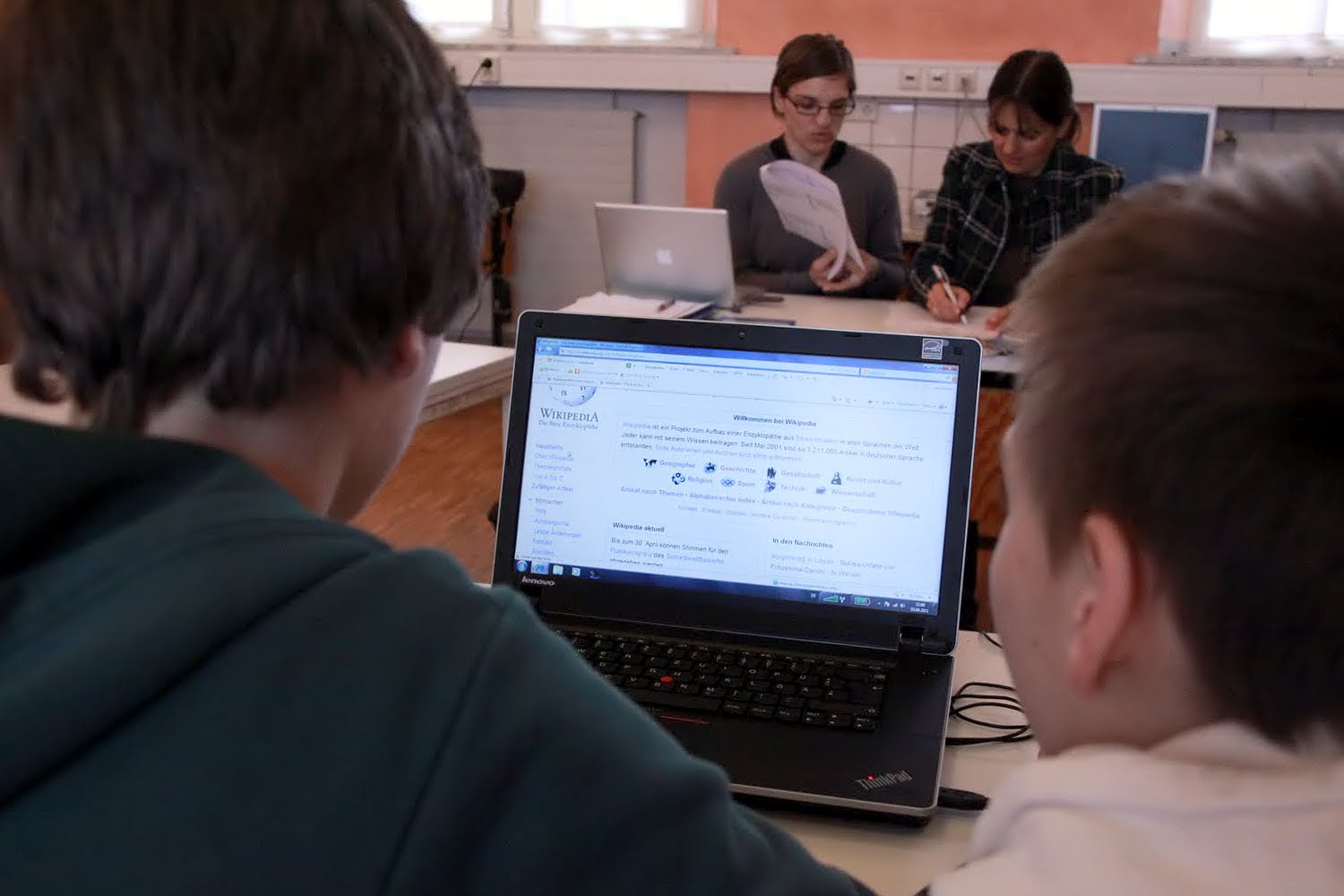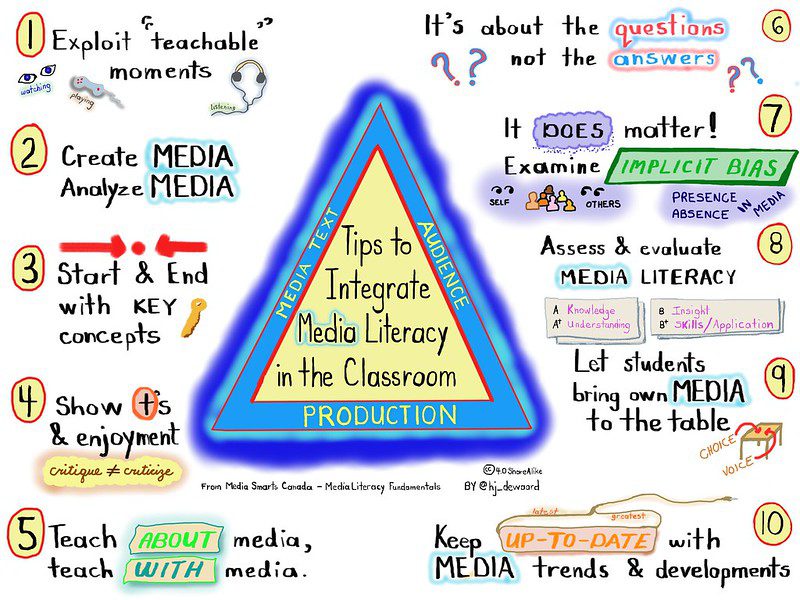In recent years, effective media literacy instruction in K-12 schools has gained momentum. And for good reason. We live in a world where social media plays an outsize role in shaping public opinion, and misinformation and disinformation spread like wildfire. Recent advances in AI only serve to amplify this already challenging media landscape. And while we’re all subject to falling for ‘fake news’ or ‘deep fakes’ or any other number of false media posts, it’s children that are often the most vulnerable to manipulation in this largely new and rocky world.
![]() With 87 percent of U.S. teens owning an iPhone, today’s students are bombarded with digital messaging every second of every day. Sorting through it all (not to mention the other print, audio, and visual media sources they consume), can be daunting to say the least.
With 87 percent of U.S. teens owning an iPhone, today’s students are bombarded with digital messaging every second of every day. Sorting through it all (not to mention the other print, audio, and visual media sources they consume), can be daunting to say the least.
How Does Media Literacy Help Students?
Educators and policy-makers alike agree that in order for students to become engaged productive citizens, they must be able to effectively seek out and create accurate information. In this blog, we’ll look at a few examples of how students are faring with media literacy (spoiler, not great!), and we’ll explore places where political progress has been made to boost media literacy in the next generation.
How Media Literate are Today’s K-12 Students?
Let’s jump right into the facts – today’s students need a lot more practice with analyzing media messages. But that is not the fault of the students themselves. Media literacy is an ever-changing landscape and not one that has been traditionally taught in schools. Today, there is no national mandate for if or how to teach media skills in schools and there are no national media literacy standards. While some states, districts, or individual teachers emphasize its importance, there are many others who don’t cover it at all.
Stanford Media Literacy Study

This patchwork approach is apparent when looking at students’ performance. In one study, led by the Stanford Graduate School of Education, over 3,000 high school students were asked to complete a series of online tasks in order to get a sense of their media competencies. The tasks included things like trying to find the original source of a video, which claimed to show ballot stuffing during the 2016 election. The result? Only three (out of over 3,000!) participants found the source, which was actually footage of voter fraud in Russia. Another task asked students to determine the credibility of a website housing climate change information. A whopping 96 percent of the students were fooled by the site, and didn’t realize that it was tied to the fossil fuel industry.
Many other studies have produced similar, worrying, findings. The call is clear that we need to do a better job of educating students in how to navigate today’s media.
Media Literacy Legislation
The good news is that in recent years, state and national leaders have taken notice of this gaping hole in our education system. In their most recent policy report, Media Literacy Now (MLN) indicates that as of 2023, 28 states have either passed media literacy legislation, or have media literacy legislation pending. Of those 28, seven states (California, Delaware, Florida, New Jersey, Ohio, Texas, and Washington) were designated by MLN as having “taken significant steps in comprehensive media literacy education through the legislative process.” An additional 12 states have passed legislation that “advances” media literacy.
Media Literacy in the Standards
CivXNow, a non-profit dedicated to advancing civics learning, found that in 2023, 75 percent of state social studies specialists answered ‘yes’ to the question of whether media literacy instruction was included in their standards. Half of those who answered ‘yes’ in 2023 had answered ‘no’ in 2021, showing a rapid growth in state-level commitment of media literacy instruction in just the past two years.
Enthusiasm is on the Rise for Teaching Media Literacy
Calls for improvements have come from the national level as well. The U.S. Surgeon General, the National Academies of Sciences, Engineering, and Medicine, and the American Psychological Association have all issued statements in the past year emphasizing the urgent need for education policy to address media literacy. Even the office of the president has sounded the alarm. In 2023, the Biden-Harris administration called for the Department of Education to provide “resources, model policies and voluntary best practices” to support school districts in boosting media literacy instruction.
Momentum has picked up among education associations as well. Membership of the National Association for Media Literacy Education, which aims to provide classroom resources to teachers, has doubled in just the past five years. And in 2022, both the National Council for the Social Studies and the National Council for Teachers of English published updated statements on the need for media literacy education.
Teachers Need More Classroom Support to Teach Media Literacy
Despite all the bills and the mounting political pressure, there is still a lot of work to be done. Media Literacy Now asserts that many of the existing laws around media literacy emphasize the need for instruction in this area, but don’t actually provide on-the-ground support. They note that instructional resources, professional development opportunities, and up-to-date curriculum are all lacking. Teacher education programs were also found to be sub-par in preparing future educators to cover these topics – only four states include substantial media literacy requirements as part of the teacher credentialing process.
Moreover, laws vary on exactly how media literacy should be taught. Some states integrate it across the curricula, while others include it as a stand-alone unit or course. Researchers have suggested that in order for media literacy to be the most effective, it should follow a carefully scaffolded curriculum that spans K-12 grade levels. As of 2023, New Jersey was the only state that requires media literacy to be taught across the K-12 grade band.
Ensuring Students are Media Literate
So where does this all leave us? While teachers wait for government funding and resources to catch-up, it seems they will need to seek support from organizations like the National Association of Media Literacy, Media Literacy Now, and the many other groups who are committed to helping educators teach this important issue. Right now, PopEd is spotlighting topic on our social channels and will be sharing lots of these great, vetted resources: Facebook, BlueSky, and LinkedIn.
No matter the age of your students, incorporating activities and discussions around media literacy is a big step in the right direction.
Photo credits: Social media icons (Social media collection 2020s, CC BY 4.0 via Wikimedia Commons); Students on laptop (Schulprojekt an der Waldorfschule Düsseldorf, CC BY-SA 3.0 via Wikimedia Commons); Media literacy sketch (Media Literacy by Helen DeWaard is licensed under CC BY 2.0)



